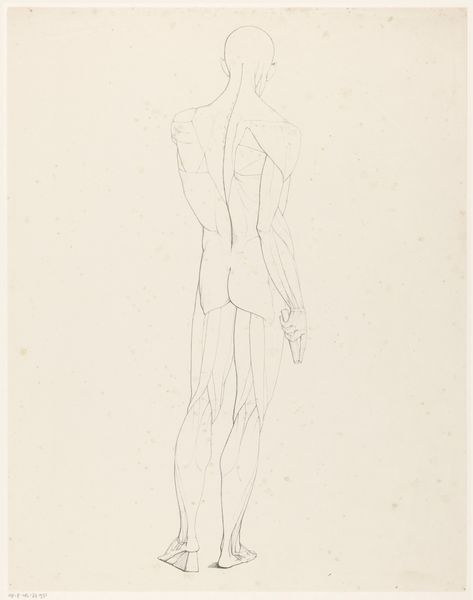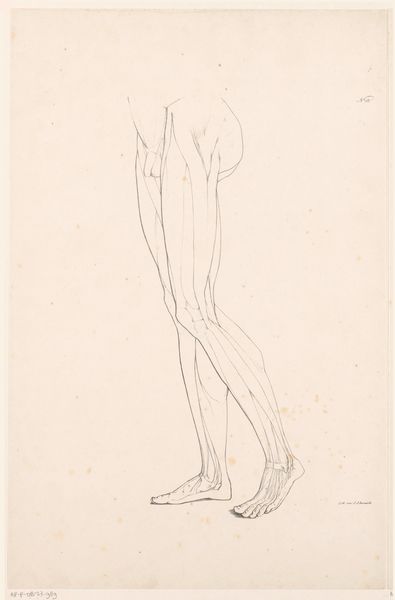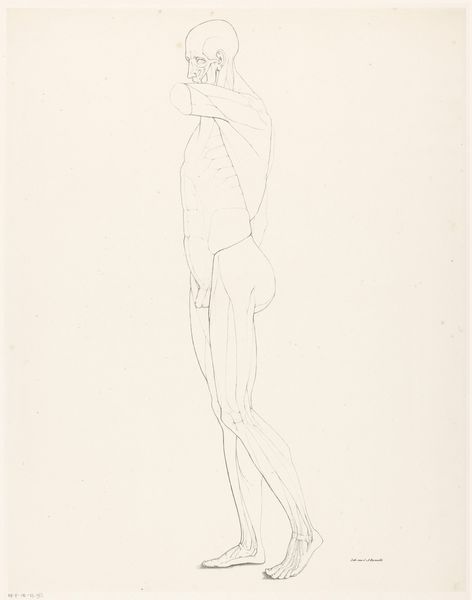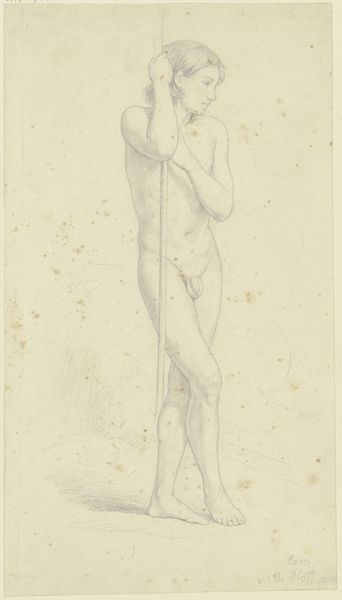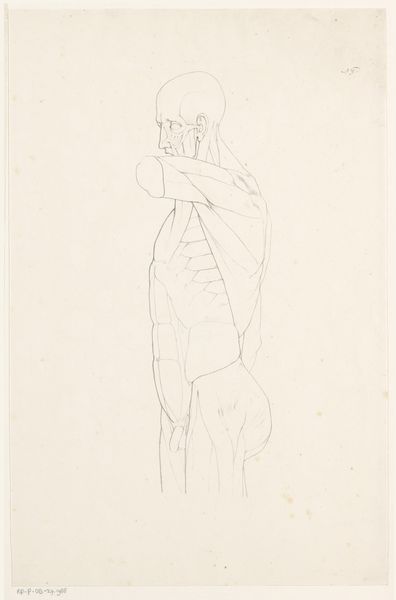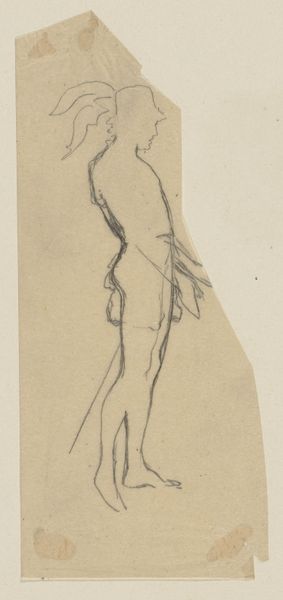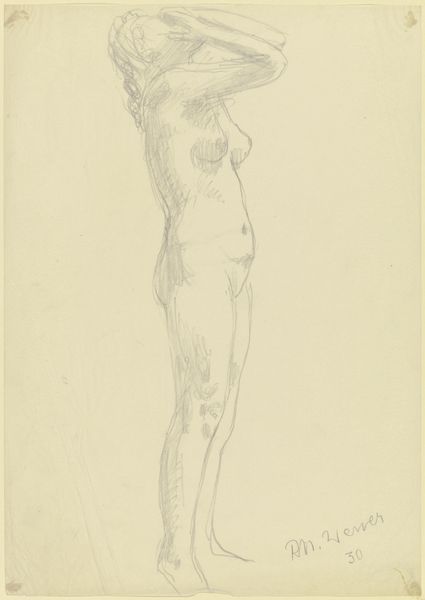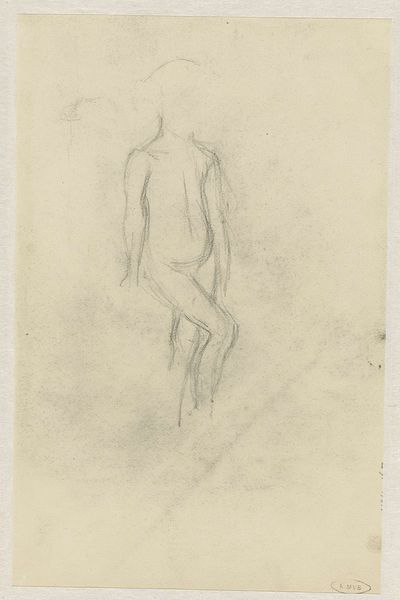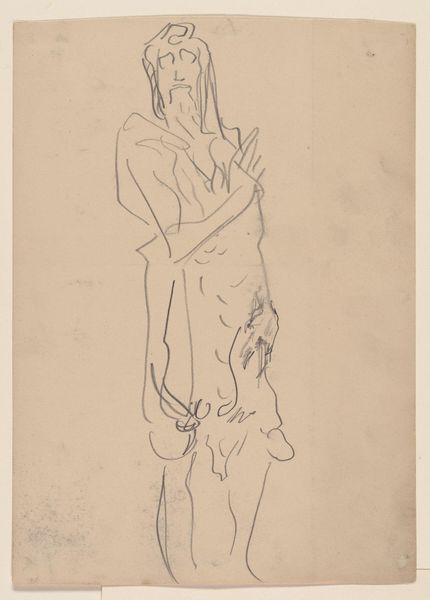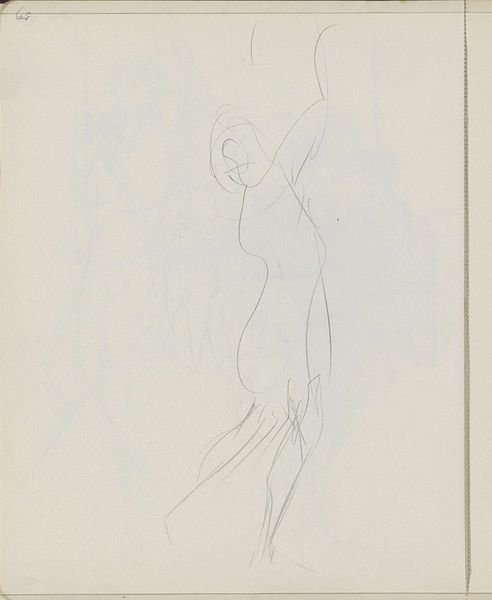
drawing, pencil, graphite
#
portrait
#
drawing
#
neoclacissism
#
pencil sketch
#
figuration
#
pencil
#
graphite
#
pencil work
#
academic-art
#
realism
Dimensions: height 545 mm, width 425 mm
Copyright: Rijks Museum: Open Domain
Curator: Before us we have Jean Augustin Daiwaille’s anatomical study, "Tekenvoorbeeld van een écorché op de rug gezien," created sometime between 1820 and 1833. It’s rendered in graphite pencil on paper. Editor: My initial impression is one of stark vulnerability. The exposed musculature, presented with such detail, evokes a sense of fragility and almost painful rawness. Curator: Indeed, the meticulous draftsmanship characteristic of academic art is evident. Note how the artist painstakingly delineates each muscle fiber, creating a complex network of lines and shadows. There's a certain beauty to its precise execution, elevating it beyond a mere medical illustration. Editor: The écorché figure traditionally symbolizes the quest for knowledge, stripping away the superficial layers to reveal the underlying truths of the human condition. This figure contorted in what could be a triumphant, even athletic, posture suggests the potential achieved by understanding this intrinsic inner machinery. Curator: Precisely! The starkness of the graphite against the paper further emphasizes the binary opposition of exteriority versus interiority, of surface against structure. Moreover, consider the neoclassical context. Editor: You’re suggesting it reflects the era’s renewed interest in classical forms and ideals? A glorification of human anatomy through scientific accuracy and idealized poses? Curator: It can be argued so. Think of the way the back is structured along strong lines that pull the figure almost out of the picture. While an artistic study for the perfection of form, I wonder, how would our response change if we saw this instead as representative of pain or struggle? Editor: The cultural memory of flayed figures stretches back to religious iconography—Saint Bartholomew immediately comes to mind. Daiwaille perhaps touches upon a deep seated response—pain mixed with respect for medical knowledge. Seeing the body as a temple stripped bare may induce our contemplation of mortality and faith. Curator: A compelling point. What initially appears as a formal study becomes imbued with complex emotional and symbolic weight when viewed through this lens. Editor: It enriches my experience, underscoring art’s capability to layer both anatomical precision with potent universal metaphors of knowledge and human limitations.
Comments
No comments
Be the first to comment and join the conversation on the ultimate creative platform.
